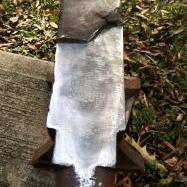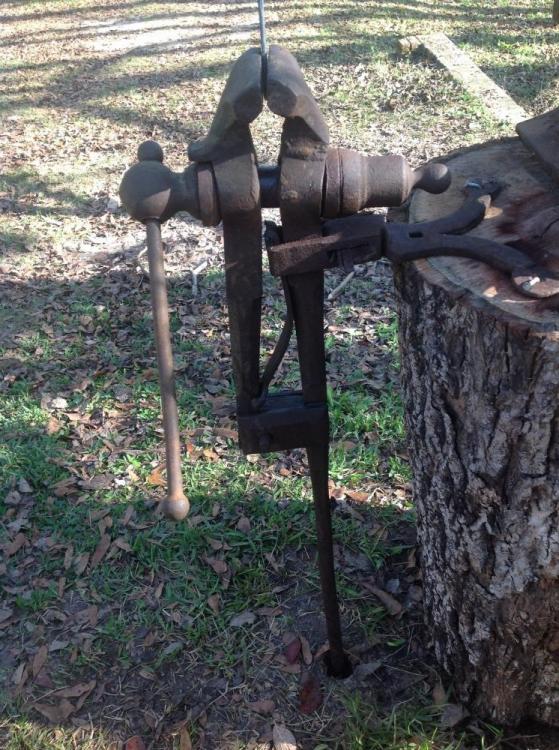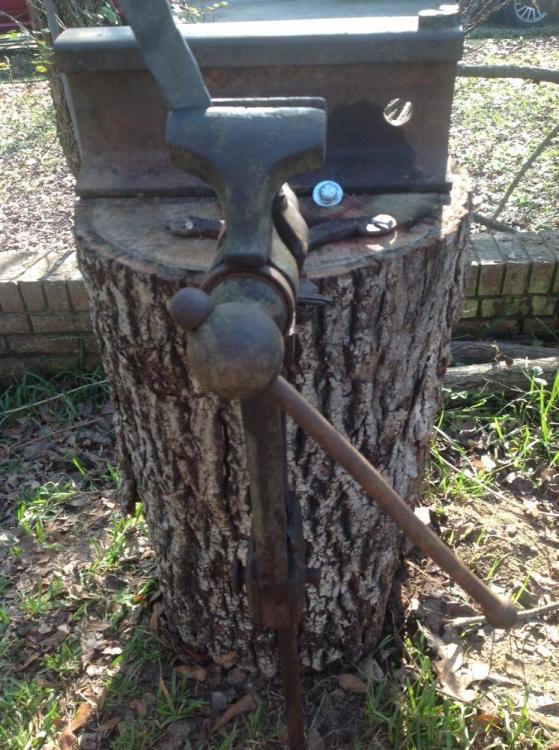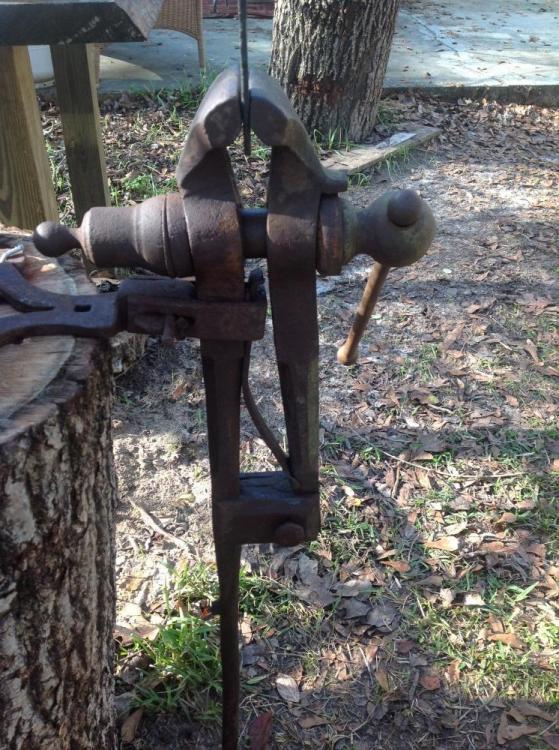-
Posts
76 -
Joined
-
Last visited
Content Type
Profiles
Forums
Articles
Gallery
Downloads
Events
Everything posted by Worshipdrummer
-
Clean, just clean.
-
That is true sir. Guidance + Effort = skill
-
I tried to post pictures last night from my Ipad but I could not get it to work. I bet it was really great learning from a Sword maker. That reminds me of the guy who taught me to make longbows. He could make perfect longbows and he made it look effortless. No glue lines, perfectly symmetrical, great style. I chased him for quite a while because he was so much better than me but in the end I made much better bows because of it. A lot of my learning curve in becoming a bowyer was learning how to use certain tools in a particular way to make the bows. I think I will follow your advise and go over the grind very carefully. I think I will also do a little work on my jig, it is rudimentary. Man, it has been a long time since I have been on this end of the learning curve. Thanks for the help.
-
I grind on a vertical belt sander using a homemade Jig which is basically a piece of Angle Iron (True) with a devise to raise or lower an angle. I grind seated in front of the sander. I am not talking about a ricasso just not a full bevel or a full flat grind. Think more along the line of a Scandi grind. The line I keep losing is the line between the bevel grind and the flat part of the blade which continues to the spine. When I get home in a couple of hours I will post a picture perhaps that will help. Would you suggest trying freehand for a newer knife attempter?
-
Ok, first there was no complaining I only asked a simple question. Second, I found an answer and was satisfied therefore I asked for the topic to be deleted. Third, I was asked to share what I found, so I did. I really do like this forum and I respect that there is a lot of experience here so I hope as experienced craftsman you guys can take some of the criticism you seem very happy to dish out. You guys have a ton of knowledge and many times when someone asks you to share a small piece of that knowledge you fire off with an insult or counterproductive comment. Thomas this is not directed at you I have noticed this very, very often when reading through older posts. Many of you identify yourself as a curmudgeon and you seem to act to reinforce the title. Do you not realize that Blacksmithing as a craft will die if those of you with experience and knowledge will not pass it on to those who are interested. I truly get that explaining the same question over and over again can get taxing but there are civil ways to get your ideas across without insulting someone because they are a newbie and available for you to pick on. I sincerely intend this to be a simple criticism and not an insult to the members of the forum I hope you can accept it as such. So ends the rant... In answering your question Thomas, I am not sure how many hours I have spent grinding blades by hand with a file or on a belt sander I do not keep track because I enjoy it. Maybe more than 100 but less than 500. I am not happy with my results because I am messing up my grind lines while cleaning and polishing the blade. That was the reason for my original question, I want to get better but I do not know what I do not know. I do appreciate your initial response though, if I understand it correctly your advise is to clean up the blade after hardening and heat treat by sanding with increasing finer grits trying to match my original grind line closely as possible. I hope I got that correct. When I switch from matching the bevel angle to clean that up, to trying to clean the part of the blade that is still flat I have noticed that is where I tend to get into trouble with my grind lines. Any advise for that part?
-
The idea I am going to try first is to grind the bevels after I harden and heat treat. I really did not know that was an option until I researched it. There were also some hybrid ideas such as grind some but not all before heat treat and hardening then there were suggestions about cleaning the blade in hot vinegar but that would not help my issue because the blades will still require sanding to remove the other stuff.
-
Thanks for the reply but never mind. I found a few ideas while researching the problem today. Would any moderator please delete this topic.
-
How do I keep from washing my grind lines out after I harden and heat treat? In other words, when I clean up the discoloration from quenching and then heat treating I use my sander to clean the knife up but I keep washing my grind lines away. Plunge line still looks good but the rest are washed out (faded) to the point they do not look good.
-
Great idea...it really shows what is underneath the corrosion can still be used for something. Great teaching tool.
-

Rounding the edges
Worshipdrummer replied to Michael Cochran's topic in Repairing and Modification to Anvils
800 grit paper sanded by hand...never can be too careful. -

Advice on a used "American" (?) anvil
Worshipdrummer replied to J_B's topic in Anvils, Swage Blocks, and Mandrels
I do not have the experience of some of the guys above but it puts me in the mind of a Peter Wright...Sway and all. -
I have been blessed since starting to learn, a friend donated an anvil, railroad track, two stumps and a table top (he has a sawmill) now the post vise. I made my first forge and bought a few hammers and another friend fixed the anvil up for me. All of this has allowed me to purchase a Diamondback forge which is much easier to work with. This is how community is supposed to work.
-
The post was in the tree not the jaws. I know it was in a local smith's shop at some point in history. Then a relative gave it to my FIL and he has never used it. I will most likely use it as is, it works well enough for me. The piece of metal in the vise is far from straight and I used my grinder on it and it did not move. Plus it is great to not have to grind in my garage any longer, I hate shop fires. After 40 years on the ground all it needed was a little TLC and it is up and running. Saved me some money...
-
My father-in-law gave me this post vise for Christmas. A relative gave it to him 40 years ago and it has sat between two trees ever since. I had to remove part of it from inside the tree. I took it apart and cleaned it up, a little grease and it is good as new. A real testament to the old days. Anyone have any idea of maker and or age?
-
I have not ever used material with any kind of pattern. I use regular Kydex with one shiny side and one dull side. It sounds to me like you may have over heated the material. I think I use about 220 degrees for mine. Does the material have a dull side? Maybe you used the wrong side?
-
Keep it. You will look back in years and see how you have progressed. I still have the first bow I ever made. It took 1.75 inches of set and it does not shoot that great but I still like to shoot it once in a while even though I have made vastly better.
-
Ship it to me right now and I will dispose of it for you... If it were mine I would heat treat it and if it held together, because it is a hidden tang knife, I would make myself a small flat sleeve to fit tightly over the tang. Secure it in place like a splint on a broken bone and finish your handle out so that the splint will not be visible. Because it is internally flawed I would keep it for my own use in case it did break one day. I know there will be better advice offered up by way more experienced people but this is what I would attempt rather than let it sit.
-
I like Beeswax, I use it in leather crafting and in making bowstrings. So you just rub in on and buff it in I guess. No heating?
-
Do you mean the color of the Kydex or the sharpness of the molding lines?
-
I know a couple of guys who use car wax on their carry pistols to prevent rust. I actually thought of trying it, now I may...Thanks
-
Holy Crap!!!! I quit. You know how to make someone feel inadequate. All kidding aside, that is a fine knife. Did you intend to make the pommel end look like a hoof? If so, man that is well executed.
-
The top one is a big fat skinner blade with cedar scales I made for the Father-in law. Next is a light skinner I made for me followed by two Tanto blades for my nephews. Still rough in appearance but all will push cut paper. I have figured out a lot which will help me with future blades so I figure by my 253rd blade I will have some lookers..
-
Yeah I found some info on forced Patina. I will give it a try...Thanks
-
Otto if you would, describe the process a little, unless you are yanking my chain, I am interested.
-
That is dag um sweet. Really like the sheath.



